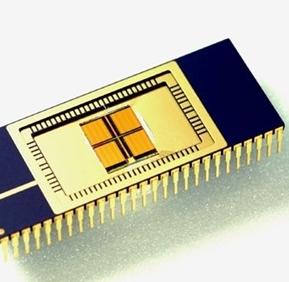
The chip is the core component of the LED. At present, there are many LED chip manufacturers at home and abroad, but there is no uniform standard for chip classification. According to power classification, there are high power and medium and low power; if classified by color, it is mainly red, green and blue; Shape classification, generally divided into square, wafer two; if classified by voltage, it is divided into low-voltage DC chip and high-voltage DC chip. Contrast between Chinese and foreign chip technology, foreign chip technology is new, and Chinese chip heavy output is not heavy technology.
Substrate material and wafer growth technology become the key At present, the development of LED chip technology lies in the substrate material and wafer growth technology. In addition to traditional sapphire, silicon (Si), and silicon carbide (SiC) substrate materials, zinc oxide (ZnO) and gallium nitride (GaN) are also the focus of current LED chip research. Currently, sapphire or silicon carbide substrates are widely used in the market to epitaxially grow wide bandgap semiconductor gallium nitride. Both of these materials are very expensive and are monopolized by large foreign companies. The price of silicon substrates is higher than that of sapphire and carbonization. The silicon substrate is much cheaper and can produce a larger size substrate to increase the utilization of MOCVD, thereby increasing the yield of the tube. Therefore, in order to break through the international patent barriers, Chinese research institutes and LED companies started researching silicon substrate materials.
However, the problem is that the high quality bonding of silicon and gallium nitride is a technical difficulty for LED chips. The technical problems such as high density of defects and cracks caused by the large mismatch between the lattice constants and the thermal expansion coefficient have long impeded the field of chips. development of.
Undoubtedly, from the perspective of the substrate, the mainstream substrates are still sapphire and silicon carbide, but silicon has become the development trend in the chip field in the future. For China, where the price war is relatively serious, silicon substrates have more cost and price advantages: the silicon substrate is a conductive substrate, which not only reduces the area of ​​the transistor, but also eliminates the need for a dry etching step on the GaN epitaxial layer. In addition, the hardness of silicon is lower than that of sapphire and silicon carbide, and some costs can be saved in processing.
Currently, the LED industry mostly uses 2-inch or 4-inch sapphire substrates. If silicon-based GaN technology is used, at least 75% of raw material cost can be saved. According to estimates by Sanken Electric Co., Japan, the cost of manufacturing a large-size blue GaN LED using a silicon substrate will be 90% lower than that of a sapphire substrate and a silicon carbide substrate.
Big differences between Chinese and foreign chip technologies International companies such as Osram, BRIDGELUX, and SAMCO INC have achieved breakthroughs in large-size silicon substrate GaN-based LED research. Philips, South Korea's Samsung, and LG International LED giants such as Japan and Toshiba also set off an upsurge of research on gallium nitride-based LEDs on silicon substrates. Among them, in 2011, Puri developed high-efficiency GaN-based LEDs on 8-inch silicon substrates, achieving a luminous efficiency of 160 lm/W that is comparable to that of top-level LED devices on sapphire and silicon carbide substrates. In 2012, OSRAM succeeded in producing 6-inch silicon-based GaN-based LEDs.
In contrast, in China, the breakthrough point of LED chip technology is mainly to increase production capacity and large-size sapphire crystal growth technology. In addition to the successful production of 2-inch silicon substrate gallium-based high-power LED chips in 2011 by Jingneng Optoelectronics, China There is no major breakthrough in silicon-based gallium nitride-based LED research. At present, China's LED chip companies still focus on production capacity, sapphire substrate materials and wafer growth technology, Sanan Optoelectronics, BDO Runda, Tongfang shares, etc. Most of the chip giants also achieved breakthroughs in production capacity.
Bi-Color LED Lamps
As this name we can know those LED can emitting two colors light. For example: red and green bi-color LED, red and blue bi-color LED, blue and green bi-color LED ect. For the bi-color LED, it can be bi-color SMD LED or bi-color through-hole LED and We can supply the color as your requirement.
Bi-Color LED Lamps
Bi-Color LED Lamps, Bi-Color LED Lights, 8mm Diamater LED Lamps, Bi-color LED Red Lamps
Shenzhen Best LED Opto-electronic Co.,Ltd , https://www.bestsmd.com